This week’s column has presented me with the rare opportunity to do a Dear Azami upgrade on a deck that I’ve actually played against. This week’s submitter, Rob, has been a friend for years. Recently, we were playing a particularly bonkers game of Commander, which he walked away with, and the subject of Dear Azami came up.
Side note: this was also the game in which he pulled off the ridiculous “Polymorphous Rush on some tokens to turn them into Wandering Temples, which then populated themselves” play, something so memorable that I’ve spoken about it in the past in this very column.
Anyway, Rob mentioned that he felt like his deck, which had a shockingly high win rate in a meta that included two different people who write about Commander on the internet, was a little loose, and I suggested he submit his decklist at some point for the column.
So here we are. Take it away, Rob!
Dear Azami,
As a relatively new parent, I don’t have a lot of opportunities to engage in one of my favorite pastimes: brewing up new Commander decks.
A few months ago, I found myself with a couple hours of free time and knew exactly how I wanted to spend it: building a new deck!
I really liked the power of Thassa as a Commander (it turns out having an indestructible unblockable commander draws a lot of aggro, so the charge is more often led by Tomorrow, Azamis Familiar). I had a lot of blue cards I wanted to be playing, but couldn’t fit into any of my existing decks (Commandeer is pretty bad in a three-color deck, lots of pet cards like Somnophore don’t make the cut in other decks, and how did I not have a single deck that was running Stormtide Leviathan?!?), so I tore into my collection and hastily made a big pile. After an hour of making hard cuts I was goldfishing and making a few final tweaks.
The (un)finished product:
Thassa, God of the Sea
Tomorrow, Azami’s Familiar
Sturmgeist
Aether Adept
Repulse
Vortex Elemental
Arcanis the Omnipotent
Havengul Runebinder
Desertion
Sakashima’s Student
Gather Specimens
Sol Ring
Caged Sun
Dreamscape Artist
Sakashima the Impostor
Thada Adel, Acquisitor
Enclave Cryptologist
Rootwater Thief
Undead Alchemist
Dominate
Bident of Thassa
Master of Waves
Sphinx of Lost Truths
Dig Through Time
Thieving Magpie
Stormtide Leviathan
Nephalia Smuggler
Thran Dynamo
Deep-Sea Kraken
Lorthos, the Tidemaker
Tandem Lookout
Thassa’s Emissary
Sphinx of Magosi
Azure Mage
Chasm Skulker
Linessa, Zephyr Mage
Ninja of the Deep Hours
Ghostly Flicker
Polymorphous Rush
Keiga, the Tide Star
Lu Xun, Scholar General
Treasure Cruise
Waterfront Bouncer
Somnophore
Callous Oppressor
Mist Raven
Djinn of Wishes
Tradewind Rider
Dance of Many
Dominating Licid
Thassa’s Ire
Armillary Sphere
Commandeer
Coastal Piracy
Traumatic Visions
Time Stop
Phyrexian Ingester
Beguiler of Wills
Volition Reins
Man-o’-War
Mulldrifter
Mnemonic Wall
Oboro, Palace in the Clouds
Halimar Depths
Nykthos, Shrine to Nyx
Faerie Conclave
Dust Bowl
Mystifying Maze
Miren, the Moaning Well
Temple of the False God
Soldevi Excavations
29 Island
There are a lot of things I like about the deck – it is pure joy to me when a board is littered with Praetors and combo pieces and everyone still agrees that my Waterfront Bouncer is the biggest threat on the board – and it has a couple of sub-themes (Thieving Magpies and Man-O-Wars abound; Dance of Many is a great Devotion enabler). Bouncing permanents is one of my favorite things to do in blue (which is why I’m willing to play sub-standard cards to do it) and, like everyone else who plays this game, I love drawing cards!
Over the last few months the deck has done very well for itself, but it has also made a few enemies. A friend with a Gisa deck was willing to suicide themselves with Shepherd of Rot just to give the Selvala player in the game the opportunity to kill me. I’m not looking to nerf the deck, but I would like to make it more fun to play against.
Because the deck was built in such a hurry, I didn’t have the chance to really contemplate each individual card choice, and the deck’s lack of cohesiveness is readily apparent. I also didn’t have much time to consider how the deck would interact with my metagame, which is full of excellent deck-builders and players who build very strong, but usually very fair decks.
I’m hoping that you can help me make the deck feel like it has a real plan, and at the same time increase the fun factor. I don’t get to play as often as I would like, and I want to make sure that everyone, not just me, gets to really enjoy the few games I do get to play.
Thanks for a great column,
Rob Ceretti
Now let’s talk a little more about how Rob fits into our metagame. First off, he’s an innovative deckbuilder. In addition to this deck he has had several others over the years, including a truly brutal build of Thraximundar and the first Shirei, Shizo’s Caretaker deck I’d ever seen. That one was particularly spectacular, turning a flood of janky cards into a legitimate (and difficult to disrupt) threat.
So, in the dark, generally it is assumed that when Rob is playing a borderline card like Waterfront Bouncer, it’s as part of a greater plan or scheme. It’s amusing to find out that’s not always true.
In addition, Rob is an absolute genius when it comes to minimizing his threat profile. This has, over time, come back to bite him. Since he’s such a slow-burn player, generally spending the first stage of the game keeping his shields up as he builds up to a powerful sequence of plays, he’s gotten to the point where he has a target on his back as soon as he enters the game… and even through that, he still manages to win most games.
But then I look at this decklist, which contains many jujitsu elements, and I am forced to admit that there is nothing short of giving him a precon that will nerf a deck in his hands. This deck has powerful cards, including often-overlooked players like Gather Specimens and Time Stop, but the overall power level on the page is nowhere near as powerful as it is in his hands.
As such, I could only make some moderate additions. I kept the budget low, and I kept the goal modest. In doing so, I stumbled upon two ideas that I think will improve the deck: adding in a minor Wizard tribal theme, and adding in Future Sight and Magus of the Future.
Of the two, the futuristic theme is easier to explain. Part of the fear when you’re playing against Rob is that he’s always got wheels in motion. Even if he’s holding nothing, he’s got such a confident affect that you really can’t tell for sure. Future Sight helps to defuse that by showing his opponents what cards he’s accessing. He’s still going to do powerful plays, and some of those plays will be even more powerful thanks to these potent card-drawing effects, but his threat profile will be a bit more accurate as a result. That certainty can do a lot of work.
Plus, those cards both offer three pips towards Devotion. That works out well with the Thassa, God of the Sea plan, as either will just turn Thassa on with any other blue card in play; separately, they work well with the Tomorrow, Azami’s Familiar plan because Tomorrow makes it easier to clear clumps off the top of your library.
The Wizard theme is a slightly more subtle inclusion. Part of the problem with decks that lack themes is that there aren’t the same clear points to attack their game-plan. If you’re playing a tribal deck, your opponents know where they should be attacking you, and there’s less chance of random incidental aggro. When you lack an obvious game-plan, though, each card becomes a potential keystone. Because your opponents don’t know what they should attack, they end up attacking things that would be fine to let slide. In certain metagames that’s something a player might want, but our metagame isn’t prize-motivated, it’s “cool plays” motivated, and in those types of metas you don’t really get much out of stealing a win.
A target, even if it’s not a real one, gives your opponents a frame of reference to judge your deck. The rest of us are going to be less afraid of Rob snagging Thassa wins if he’s showing evidence of a central theme. Otherwise, it just looks like a control deck that plans to finish games through an unblockable commander.
Before I get into the actual changes, though, there’s one more note about the cards I decided to keep. I kept in the Flickermancer combo because it requires three cards and is relatively easy to disrupt, but I didn’t supplement it with Deadeye Navigator. Deadeye Navigator plays well with the rest of the deck, but it’s a combo in a can, pairing up with almost anything to just completely go off. Add in how irritating it is to track Soulbond on a complicated board state and you have exactly the type of card I think it’s better to leave out of a powerful deck like this.
First Change: A Solid Manabase
Out (3):



In (3):
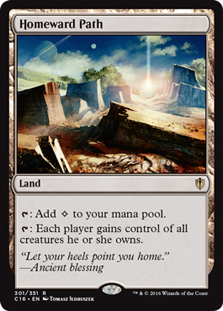
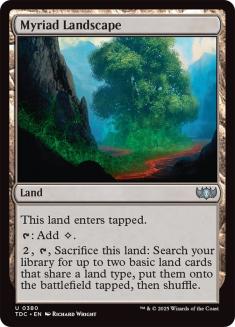
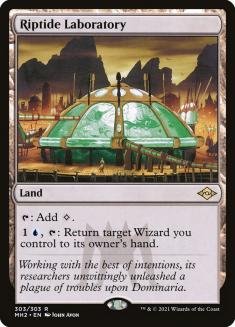
The land section is pretty straightforward. Rob has well over 40 mana sources in his deck, but given the way it plays out it seemed like he should stay with 38 lands. As such, I substituted the three lands I wanted to bring in for basic Islands, dropping his Island count down to a respectable 26.
Homeward Path came in for two reasons. First, Rob’s deck had a fair number of steal effects in it, and, for reasons of goodwill, politics, or poison pills, every once in a while you’ll want to return the profits of your thievery. Also, I’m adding in Perplexing Chimera, and the Chimera loves to play on the Homeward Path. I like that combo in a deck like this because, while it’s powerful, it has two major limitations. First, Homeward Path is a symmetrical effect. In a deck that’s stealing things, you can’t just reset the Perplexing Chimera with abandon since it may mean giving back other, more valuable permanents. Second, this type of deck is only going to get a limited number of steal effects off the combo in any given turn cycle. It’s potentially powerful, but it’s not a hard lock. Not even close.
I’ve brought in Myriad Landscape because I think it was one of the better inclusions in Commander 2015, and I think more mono-colored decks should be playing it. It’s a relatively cheap, color-neutral way to get ahead on lands that only takes up a nonbasic land slot, and that’s usually worth including (even if it doesn’t have a snow-supertype exploit, as some people had initially thought).
Finally, Riptide Laboratory is in there for the Wizard theme. While the best interaction in the main list is Riptide Laboratory and Aether Adept, I’m also adding in Archaeomancer. That gives the Flickermancer combo some redundancy, and gives us a manual way to replicate the loop in a pinch.
Extra Ramp For Doing More
Out (1):
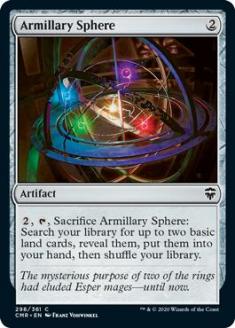
In (3):
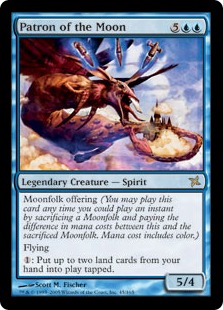
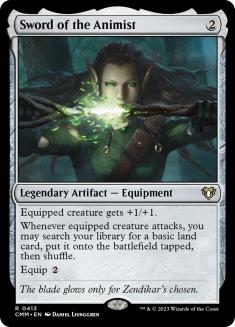
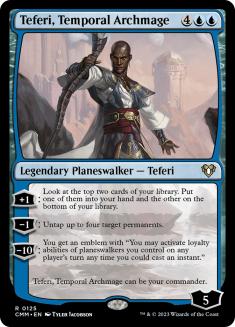
In general, I’m not a huge fan of Armillary Sphere. It has many devotees and you see it show up in a lot of lists, but I don’t like it unless the deck has specific artifact synergies. Spending four mana and a card for two lands in hand is really not a great rate of return, especially now that you can get Sword of the Animist for the same mana. Sword of the Animist is such a great Commander card, and I’m really glad they printed it. I imagine in a few years it will lose its luster, like Solemn Simulacrum has after years of showing up in practically every deck, but in the meantime it’s a great addition to a deck like this.
Patron of the Moon is a strange card. I think it’s powerful and underappreciated, but the art has always been a turnoff for me. It just seems to be evoking the same stereotypes that Mickey Rooney so infamously portrayed in Breakfast at Tiffany’s. I get that it’s a reference to the tsuki-usagi, or moon-hare. But those exaggerated teeth kill me. I don’t think intent changes that. Anyway, it’s still a great card, in that it does something no other blue card does. In a deck that draws a lot of cards, being able to get those lands out of your hands and onto the battlefield is really important.
Finally, there’s Teferi, Temporal Archmage. Teferi is at his best in decks where your opponents don’t need to fear the ultimate, and this deck meets that criteria. The minus ability is powerful, and it gets turbocharged by cards like Thran Dynamo and Sol Ring. It ramps, gets you extra uses out of Miren, the Moaning Well and Mystifying Maze, it offers pseudo-vigilance, and it doubles the power of cards like Arcanis the Omnipotent. That’s a lot of really powerful ways to use the card without even mentioning the plus ability that draws you cards. I wouldn’t ever run him as the commander in this build (or really any build; my attempts to make a satisfying Teferi build have always run into The Chain Veil, which is too tempting to pass up and too broken to allow to live), but he’s definitely a good card for your 99.
Card Advantage Machines
Out (5):
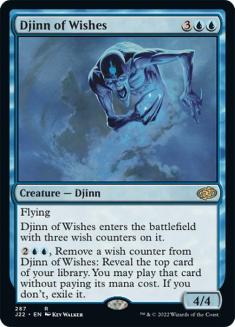
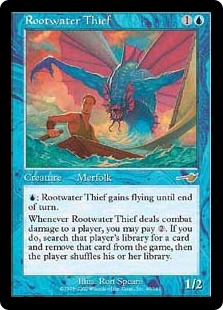
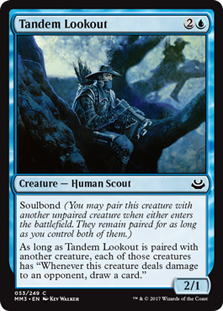
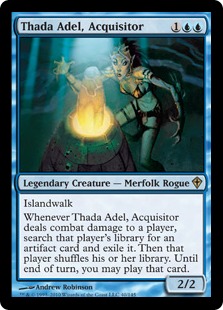
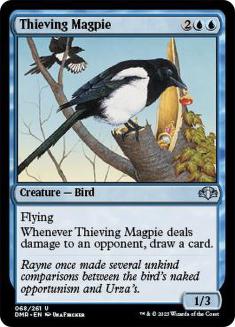
In (7):
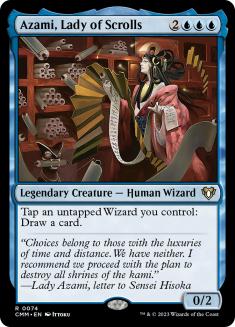
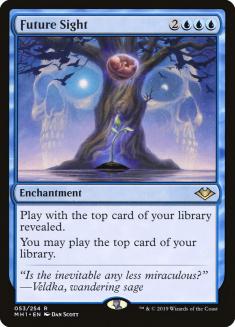
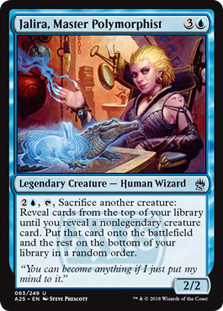
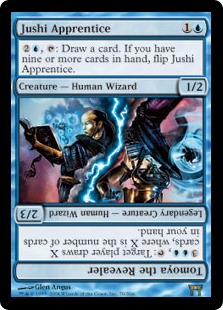
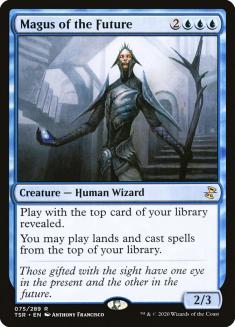
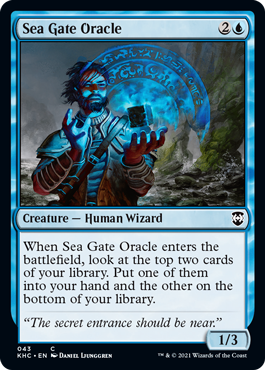
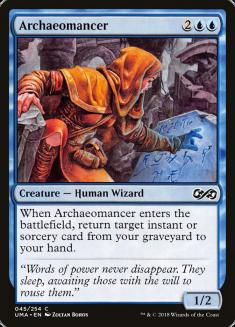
Djinn of Wishes is a high-variance card. Sometimes it’s going to be brutal, but often it runs into timing restrictions. Sure, the Djinn can weave its magic and let you cast creatures and sorceries at instant speed, but what if you run into lands? What if you reveal a counterspell at the wrong time? The mana you save on any successful wishes is balanced out by the fact it blanks on 50% of the deck. If you want a five-drop that lets you play off the top of the library, Magus of the Future offers far more, at the expense of flying.
I do not get Rootwater Thief. It draws aggro because the effect is super annoying, but it’s costly and it doesn’t really get you much. At least Thada Adel, Acquisitor gets you the chance to play the artifact, although again it’s the type of card that draws a lot of aggro. It’s not that Thada Adel is bad, but it’s a little played out at this point. I think, these days, it’s Praetor’s Grasp or bust if you want to rifle through an opponent’s library during a game. Commander takes long enough as it is.
I cut Tandem Lookout and Thieving Magpie because I feel like your deck had enough of those effects, and neither was on-theme with the rest of the deck. Plus, as previously mentioned, I find Soulbond to be an irritating mechanic in Commander because no one remembers to bring numbered Soulbond markers to track those things. I like Thassa’s Emissary, though, because the Bestow ability has a lot of potential, and horsemanship may as well be unblockable. Sturmgeist gets huge and finishes out games, while Ninja of the Deep Hours resets the deck’s Mulldrifter-style cards. So Thieving Magpie and Tandem Lookout were the cuts of this type of creature.
Azami, Lady of Scrolls offers a more reliable form of draw, while offering three pips towards Devotion. The draw on the Thieving Magpie cards is dependent on a lot of factors; Azami does not have that problem. She’s basically the key element of the “Wizards Matter” theme, since I didn’t add cards like Patron Wizard. Should you like the way this plays, it’s worth considering Patron Wizard, Voidmage Prodigy, Sigil Tracer, and Riptide Director, since each of those cards offers tribal synergies without requiring a lot of Wizards in play to earn their keep.
Jalira is a Wizard, so she can be tapped for Azami’s ability or bounced by the Lab, but her main appeal is in her ability to repeatedly cast Polymorph on your spent Mulldrifters. Generally I prefer Proteus Staff, but between the changed tuck rule, your need for pips towards Devotion and the Wizard synergies, I think Jalira works better in this context.
Archaeomancer is to give the expensive, fragile, and slow Flickermancer combo some redundancy. Sea Gate Oracle, believe it or not, is there for a similar reason; sometimes you have the Flickermancer combo going but no Mist Raven or similar card. Sea Gate Oracle lets you dig for them while still holding the ground from a lot of incidental aggro, especially now that Renown is a thing.
Controlling The Board
Out (5):
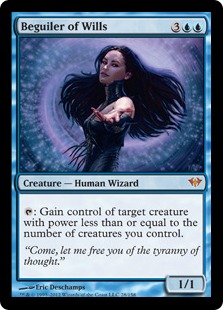
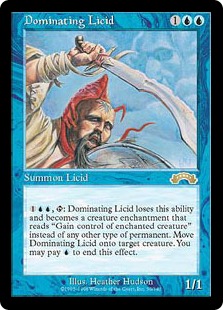
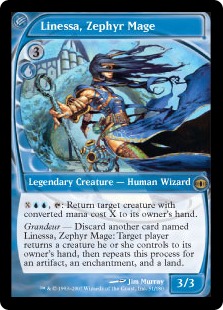
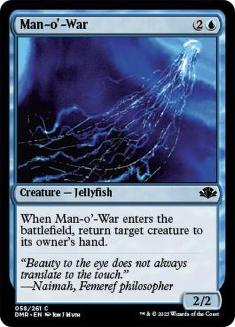
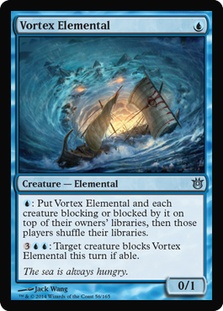
In (4):
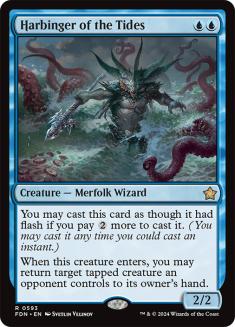
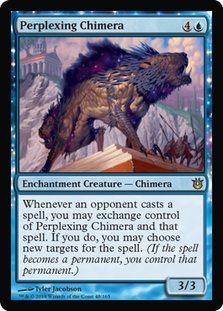
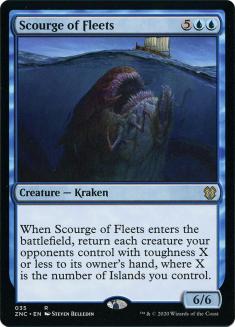
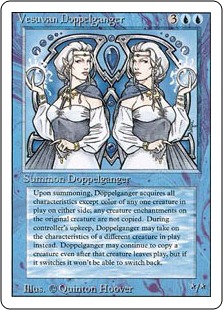
Vortex Elemental is another card that’s gotten worse since they instituted the change to the tuck rule. Now don’t get me wrong, I fully support that development in Commander, but there were a lot of neat blue cards that got a lot worse after the announcement. This is one of them.
Beguiler of Wills and Linessa, Zephyr Mage might seem like odd cuts since they are Wizards, but I’m not a huge fan of either card. I think Beguiler of Wills is slow and tends to draw more attention than a card like that should, and Linessa’s ability generally just costs too much.
Dominating Licid is cute, and I want to kill it whenever I see someone (i.e. Rob) resolve the damn thing. Still, this too is a slow card, although it at least has the benefits of versatility. I’m not entirely sure what happens if your opponent sacrifices the target in response to using the ability, but at the very least it leaves your Licid tapped and awaiting the next turn cycle, which seems less than ideal.
Man-o-War is a great card (one that shines in Animar, Soul of Elements builds in particular), but you already have many similar bounce effects. Since Aether Adept is a Wizard at the three spot, and Mist Raven is a flier at four, it seemed like Man-o-War was the odd Jellyfish out. In its place, I’ve brought in Harbinger of the Tides. It’s more restricted in what it can target, but I’ve kept in Thassa’s Ire (Rob has used that to good effect in the past) so I’m sure you’ll be able to work it out. Being able to flash it in, and being able to get two pips of Devotion on turn two, are both compelling reasons to run the Harbinger over Man-o’-War.
Scourge of the Fleets is another powerful mass-bounce spell, only this one is asymmetrical and stapled to a 6/6 Kraken. Since your mono-blue deck is running so many Islands, it should usually be able to fully wipe your opponents’ creatures, but without all the feel-bad elements that an end step overloaded Cyclonic Rift inevitably causes. Scourge has to be cast at sorcery speed and it leaves the artifacts and enchantments alone, allowing for more reliable rebuilds. Bad if you’re competitive, but it’s more of a feel-good take on that effect in a more casual environment.
Finally, there’s Vesuvan Doppelganger. I readily admit this is a pet card, but it helps to control the board if you can always make a copy of the best creature on it. Especially now that the legendary rules have cleaned up!
Cut Down On Pure Offense
Out (4):
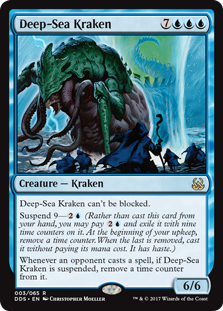
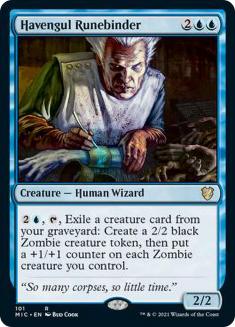
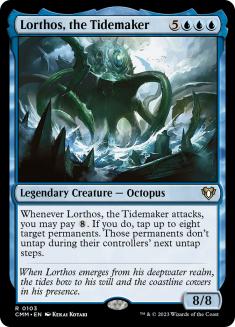
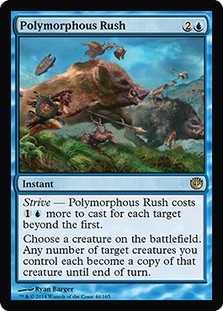
In (1):
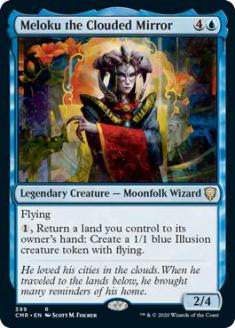
Let’s get this out of the way first: you have already hit the apex of what you can do with Polymorphous Rush. That play, where you turned some unblocked tokens into Wandering Temples and then self-Proliferated them, giving you permanent token copies of Wandering Temple that would continue self-populating themselves in exponential fashion… that was shooting the moon. It was the type of play that I for one will never forget, and I really do think it’s about as good as that card can possibly get. Leave it on that high note.
Deep-Sea Kraken is a cheap monster, but it’s a pure offense card. There’s no real reason to play it other than turning it sideways, and turning it sideways isn’t particularly interactive. As such, it seems like it’s a reasonable thing to cut. In its place you now have things like Scourge of the Fleets, which not only has an enter-the-battlefield effect but also allows a lot more play than an unblockable beater would. If you don’t attack with your unblockable creature, it means a lot more than if you don’t attack with a blockable one. Given Thassa’s ability means anything can be unblockable, having a creature whose sole characteristic is that it can’t be blocked seems like a slot that could be better used.
I’m not a huge fan of Havengul Runebinder in any deck because I feel like it wastes resources. It demands you have a stream of creatures in your graveyard, and there’s no great way for you to feed that synergy in the deck as currently built. Even if you do manage to get some cards in your graveyard, you’re playing Treasure Cruise and Dig Through Time (choices I agree with completely, for what it’s worth). Those cards need a stocked graveyard; a couple of zombie tokens don’t seem worth it when you need to use those cards for your delve spells.
Lorthos, the Tidemaker demands your full attention. It wants you to be swinging every turn with it and paying eight mana every time you swing, and that’s some really high-maintenance stuff. I want it to be a good card, I really do, but I just don’t think it earns its seat at the table.
Instead, run something like Meloku. She’s gross when paired with her Patron of the Moon, and even without that combo she manages to prompt a stream of disposable Spirit tokens. If you absolutely hate this idea, perhaps it’s worth investing in a Hangarback Walker, which offers some similar upsides… but that card is currently all the rage, and I think it might be worth holding off on buying into it until it’s no longer being driven up by its use in Standard.
The List
Creatures (40)
- 1 Tomorrow, Azami's Familiar
- 1 Patron of the Moon
- 1 Ninja of the Deep Hours
- 1 Tradewind Rider
- 1 Waterfront Bouncer
- 1 Meloku the Clouded Mirror
- 1 Vesuvan Doppelganger
- 1 Lu Xun, Scholar General
- 1 Keiga, the Tide Star
- 1 Jushi Apprentice
- 1 Azami, Lady of Scrolls
- 1 Arcanis the Omnipotent
- 1 Callous Oppressor
- 1 Somnophore
- 1 Sakashima the Impostor
- 1 Dreamscape Artist
- 1 Magus of the Future
- 1 Mulldrifter
- 1 Sphinx of Lost Truths
- 1 Enclave Cryptologist
- 1 Mnemonic Wall
- 1 Sea Gate Oracle
- 1 Sphinx of Magosi
- 1 Aether Adept
- 1 Stormtide Leviathan
- 1 Phyrexian Ingester
- 1 Azure Mage
- 1 Undead Alchemist
- 1 Sturmgeist
- 1 Nephalia Smuggler
- 1 Mist Raven
- 1 Sakashima's Student
- 1 Archaeomancer
- 1 Thassa's Emissary
- 1 Master of Waves
- 1 Perplexing Chimera
- 1 Scourge of Fleets
- 1 Chasm Skulker
- 1 Jalira, Master Polymorphist
- 1 Harbinger of the Tides
Planeswalkers (1)
Lands (38)
Spells (21)
- 1 Sol Ring
- 1 Time Stop
- 1 Future Sight
- 1 Desertion
- 1 Dance of Many
- 1 Coastal Piracy
- 1 Thran Dynamo
- 1 Dominate
- 1 Repulse
- 1 Commandeer
- 1 Gather Specimens
- 1 Traumatic Visions
- 1 Armillary Sphere
- 1 Volition Reins
- 1 Caged Sun
- 1 Ghostly Flicker
- 1 Bident of Thassa
- 1 Thassa's Ire
- 1 Treasure Cruise
- 1 Dig Through Time
- 1 Sword of the Animist

As you can see, the deck is fundamentally the same. It has the same underlying elements, and it should play similarly. But by giving your opponents some more information and offering some more concrete targets for your opponents to vent their fears against, this should ensure a bit more of a friendly play environment without diluting your win percentage.
Plus, this offers me a chance to see how the deck actually plays after a doctoring, which is a rare treat!
The Cost
I tried to keep this deck to a reasonable price tag, given both the desire to ameliorate your threat profile (something adding money cards like Vedalken Shackles would not do) and the fact that you have a baby! I hear those things are expensive.
Here’s how the build totaled out:
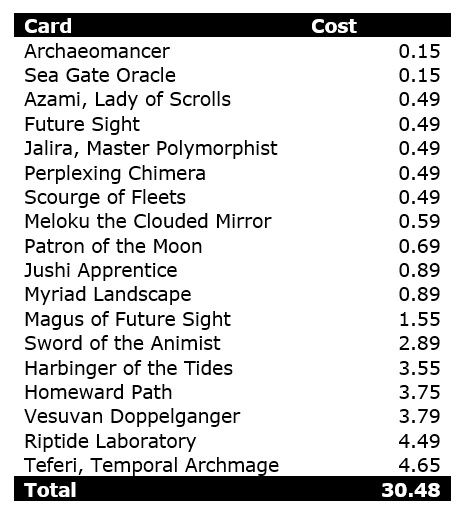
As you can see, I kept it to around $30, further lessened by the $20 store credit to StarCityGames.com that all chosen submissions are awarded. Remember folks, submit to DearAzami [at] gmail [dot] com, sending us a decklist and a brief mission statement about what direction you want for us to take your deck. We try to tailor our responses to your play style, after all, although there’s a fair bit of filtering-through-our-own-sensibilities that’s inherent to any advice column.
Anyway, that brings us to the end of this week’s Dear Azami! Rob, I hope you like what I did with your deck; given the extra stress that seems to come from advising a friend, I’m not super likely to replicate this experiment. That having been said, if there are any interesting developments within our playgroup, I’ll let you all know.
Tune in next week for Cassidy’s triumphant return to Dear Azami! I’m sure he’ll do something splashy and fun.
Want to submit a deck for consideration to Dear Azami? We’re always accepting deck submissions to consider for use in a future article. Only one deck submission will be chosen per article, but being selected for the next edition of Dear Azami includes not just deck advice but also a $20 coupon to StarCityGames.com!
Email us a deck submission using this link here!
Like what you’ve seen? Feel free to explore more of Dear Azami here, in the Article Archives! And feel free to check Jess’s own Command of Etiquette column on Hipsters of the Coast, for more Commander and casual content. Now on Thursdays!

